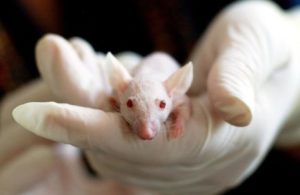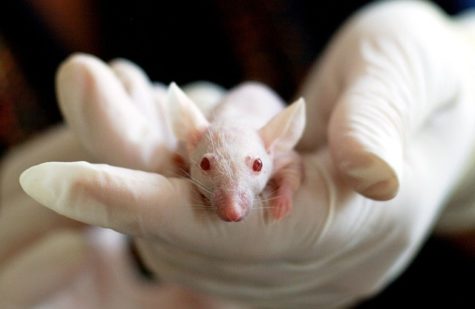CLEVELAND — A major breakthrough in the war against Alzheimer’s disease may pave the way for one of the most effective treatments to date. A team of scientists say they have successfully reversed the disease in mice.
Many more trials, tests, and hours of research remain before their method can be tried on humans, but it’s an historic step in the right direction.
The researchers, based at the Cleveland Clinic Lerner Research Institute, found that by gradually reducing an enzyme in the brain called BACE1, they reversed the formation of amyloid plaques in the brains of mice with Alzheimer’s disease, improving their cognitive function. The scientists hope that this research will eventually produce drugs aimed at this enzyme in human brains.
“To our knowledge, this is the first observation of such a dramatic reversal of amyloid deposition in any study of Alzheimer’s disease mouse models,” says researcher Riqiang Yan in a news release by the Rockefeller University press.

Alzheimer’s typically starts with the abnormal buildup of beta-amyloid peptides, which gather together and form amyloid plaques in the brain, restricting recall, memory, and other crucial brain functions. BACE1 helps produce beta-amyloid peptides. There are already drugs in experimental stages that target BACE1, but because the enzyme also serves many critical purposes in the brain, there are serious side effects that have cropped up in the research thus far.
By selectively breeding mice, Yan and his team generated mice that lose their BACE1 as they grow older. Mice with no BACE1 whatsoever have been shown to develop severe neurological defects, but Yan found that by slowly reducing levels through time, the mice remained perfectly healthy.
The researchers bred these mice with those that developed Alzheimer’s at 75 days old. The offspring showed signs of Alzheimer’s disease after 75 days, despite their BACE1 levels being 50% lower than normal. But, their amyloid plaques slowly disappeared until they vanished completely at ten months old.
While the researchers noticed the absence of numerous telltale signs of Alzheimer’s disease, they also found that the rodents showed greater cognitive abilities after the removal of the enzyme.
“Our study provides genetic evidence that preformed amyloid deposition can be completely reversed after sequential and increased deletion of BACE1 in the adult,” says Yan. “Our data show that BACE1 inhibitors have the potential to treat Alzheimer’s disease patients without unwanted toxicity. Future studies should develop strategies to minimize the synaptic impairments arising from significant inhibition of BACE1 to achieve maximal and optimal benefits for Alzheimer’s patients.”
The complete study was published in the Journal of Experimental Medicine.

This is good news for Hilliary. The scale up for weasels should be minimal
Another “panacea” cure that will go through a decade of multiple blind studies, then ultimately fail to get approval by the FDA. I’ve seen it way too many times.
How do you know if a mouse has alzheimer’s in the first place ??
Maybe there is hope for Crooked Hillary afterall?
Cures already out there, but not for the little people!
This is great news for liberals since the “super smart” ones have brains the size of mice. They other ones have no brains.
Nancy Pelosi to be first human subject
For the measly price of $37 you can learn how to prevent/cure Alzheimer………..
Well that’s the claim. But we will never know since their claim will never be tested by any recognized “authority”. And it’s un-patendable which means there isn’t a TRILLION dollars to be made which is why it will never be tested.
So the research suggests the enzyme inhibitor removes the amyloid plaque from neurons but up till now the plaque was thought to be only symptomatic of Alzheimers and not necessarily a contributing factor. What they’re suggesting now is that the plaque does in fact play a major role in Alzheimers. If true, then that alone would be big news.
This was done before, published in Nature Magazine around 2002, Elan Pharma showed the same thing in mice, I believe human clinacal trials were stopped because of people dying from encephalitis. Stock went from approx. $64 a share to 34 cents.
Wow, how brilliant are these people? Could end a lot of suffering and heartbreak.
I’m sure the mice are thrilled.
very good, democrats need a break from all the resisting or whatever they call the crap they do
Great, now I can remind uncle Mickey and aunt Minnie just how much I really mean to them. They’re loaded !
Once they find a drug that will successfully reverse it in rats, politicians will buy it up and kill any further research.
Dumb comment. What’ll actually happen is someone will fight to get the patent and try to get rich selling the drug, and then people will whine about the price.
Now, there is finally……..uhmm…..uhm……uhm.
How do they know those mice even have Alzheimer’s?
Can they not find their way home? Do they ever let them out of the cage to find out?
Can they not recognize they’re relatives? Don’t lab mice all look the same anyway?
Something’s not right here…